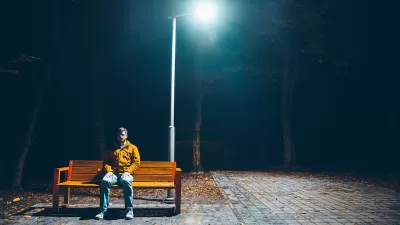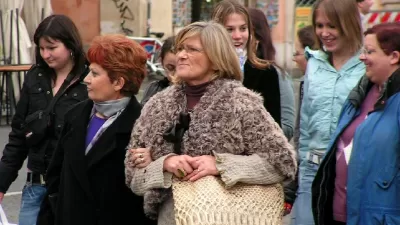Planetizen and Project for Public Spaces want you to help us determine the best public spaces in the United States and Canada. Add your favorites to our list, and vote for other submissions to move them up in the rankings. The results will be published on October 20th, 2011.
Two years ago, we asked you, our esteemed Planetizen readership, to help us determine the Top 100 Urban Thinkers. With thousands of votes, the crowdsourced list was provocative, unique and – to our amazement – very comprehensive. We'd like to access that same collective brainpower for our latest venture, in collaboration with the experts in this area, Project for Public Spaces (PPS).
In evaluating thousands of public spaces around the world, PPS found that successful ones have four key qualities: they are accessible; people are engaged in activities there; the space is comfortable and has a good image; and finally, it is a sociable place: one where people meet each other and take people when they come to visit. Use these guidelines to help you choose your own selections, or use your own criteria to select your favorites.

Technically, there many examples out there of seemingly "public" spaces that are actually privately owned public open spaces, or POPOS. While the public/private distinction is interesting and sometimes problematic, we're going to ignore it for the purposes of this list. If Redwood Park, which is operated by the Transamerica Pyramid Building management in San Francisco is in your opinion one of the best spaces for the general public to gather and enjoy each other's company, feel free to nominate it. That said, let's draw the line at fully-enclosed private malls.
PPS offers another way to think about the success of public spaces, using the handy chart below. Imagine that the center circle on the diagram is a specific place that you know: a street corner, a playground, a plaza outside a building. You can evaluate that place according to four criteria in the red ring. In the ring outside these main criteria are a number of intuitive or qualitative aspects by which to judge a place; the next outer ring shows the quantitative aspects that can be measured by statistics or research.

For ideas, images and more, you can browse PPS' database of Great Public Spaces. For the purposes of this survey, we're not limiting the selections to, say, civic squares. A lot of the best public spaces today are pedestrian corridors, parks or markets.
If you're ready to vote, head over to publicspaces.ideascale.com and add your suggestions. You can also vote on other submissions. Voting will close in one month on 10/15, and we'll release the results shortly after.

Alabama: Trump Terminates Settlements for Black Communities Harmed By Raw Sewage
Trump deemed the landmark civil rights agreement “illegal DEI and environmental justice policy.”

Planetizen Federal Action Tracker
A weekly monitor of how Trump’s orders and actions are impacting planners and planning in America.

The 120 Year Old Tiny Home Villages That Sheltered San Francisco’s Earthquake Refugees
More than a century ago, San Francisco mobilized to house thousands of residents displaced by the 1906 earthquake. Could their strategy offer a model for the present?

Record Temperatures Prompt Push for Environmental Justice Bills
Nevada legislators are proposing laws that would mandate heat mitigation measures to protect residents from the impacts of extreme heat.

Downtown Pittsburgh Set to Gain 1,300 New Housing Units
Pittsburgh’s office buildings, many of which date back to the early 20th century, are prime candidates for conversion to housing.

Trump Administration Could Effectively End Housing Voucher Program
Federal officials are eyeing major cuts to the Section 8 program that helps millions of low-income households pay rent.
Urban Design for Planners 1: Software Tools
This six-course series explores essential urban design concepts using open source software and equips planners with the tools they need to participate fully in the urban design process.
Planning for Universal Design
Learn the tools for implementing Universal Design in planning regulations.
Clanton & Associates, Inc.
Jessamine County Fiscal Court
Institute for Housing and Urban Development Studies (IHS)
City of Grandview
Harvard GSD Executive Education
Toledo-Lucas County Plan Commissions
Salt Lake City
NYU Wagner Graduate School of Public Service





























